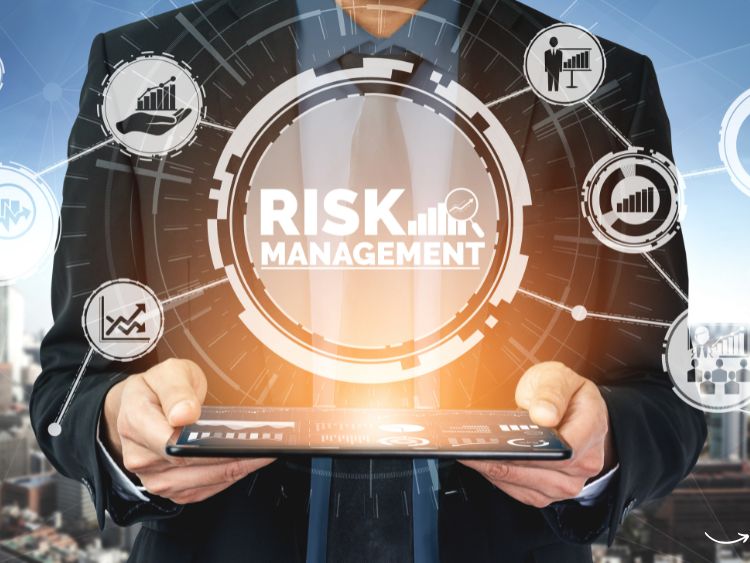In today’s volatile business environment, risk management plays a crucial role in safeguarding an organization’s assets and ensuring its long-term success. But what exactly does a risk manager do? If you’re considering a career in this field or need to craft a risk management job description for your company, you’ve come to the right place. Let’s dive into the details of what makes a great risk manager, the skills they need, and the responsibilities they hold.
What is Risk Management?
Risk management involves identifying, assessing, and prioritizing risks to minimize, monitor, and control the probability or impact of unfortunate events. It is an essential function in any organization, ensuring that potential threats are identified early and managed proactively.
Key Responsibilities of a Risk Manager
A risk manager is responsible for various tasks that revolve around mitigating risks within an organization. Here are some of the primary duties:
1. Risk Assessment
- Identifying Risks: Understanding potential risks that could affect the organization.
- Analyzing Risks: Evaluating the likelihood and impact of identified risks.
- Prioritizing Risks: Determining which risks require immediate attention and which can be monitored over time.
2. Risk Mitigation
- Developing Strategies: Creating plans to minimize or eliminate risks.
- Implementing Controls: Putting in place measures to reduce risk impact.
- Monitoring Effectiveness: Continuously checking if risk mitigation strategies are working as intended.
3. Reporting
- Documentation: Keeping detailed records of risk assessments and mitigation plans.
- Communication: Reporting findings and recommendations to senior management and stakeholders.
4. Compliance and Governance
- Regulatory Adherence: Ensuring the organization complies with local, national, and international regulations.
- Internal Policies: Developing and enforcing internal risk management policies and procedures.
Essential Skills for a Risk Manager
To excel in risk management, certain skills and attributes are crucial. Here’s a rundown of the most important ones:
Analytical Skills
Risk managers need to analyze complex data and scenarios to identify potential risks and develop effective mitigation strategies.
Attention to Detail
A keen eye for detail helps in identifying even the smallest potential risks that might be overlooked by others.
Communication Skills
Effective communication is vital for explaining risks and mitigation strategies to stakeholders who may not have a technical background.
Problem-Solving Abilities
Risk managers must be adept at finding practical solutions to reduce or eliminate risks.
Knowledge of Industry Regulations
Understanding the regulatory landscape is crucial for ensuring compliance and avoiding legal issues.
Educational and Professional Requirements
A career in risk management typically requires a combination of education and professional experience. Here’s what you need to know:
Educational Background
- Bachelor’s Degree: Most risk managers have a degree in business, finance, or a related field.
- Master’s Degree: An MBA or a master’s degree in risk management or finance can be advantageous.
Certifications
- Certified Risk Manager (CRM)
- Certified Risk and Insurance Management Society Fellow (CRIMS)
- Project Management Professional (PMP)
Professional Experience
Hands-on experience in finance, insurance, or project management is often required, along with a proven track record in identifying and mitigating risks.
Career Path and Progression
Risk management offers a clear career progression path, often starting with entry-level positions such as risk analyst or risk coordinator and moving up to senior roles like chief risk officer (CRO).
Entry-Level Positions
- Risk Analyst
- Risk Coordinator
Mid-Level Positions
- Risk Manager
- Compliance Manager
Senior-Level Positions
- Senior Risk Manager
- Chief Risk Officer (CRO)
Risk Management Tools and Techniques
Risk managers use a variety of tools and techniques to identify and mitigate risks effectively. Here are some common ones:
Risk Assessment Tools
- SWOT Analysis: Identifies strengths, weaknesses, opportunities, and threats.
- Risk Matrices: Helps prioritize risks based on their likelihood and impact.
Risk Mitigation Techniques
- Avoidance: Eliminating activities that introduce risk.
- Reduction: Implementing measures to reduce the impact or likelihood of risks.
- Transfer: Using insurance or contracts to transfer risk to another party.
- Acceptance: Acknowledging the risk and preparing to deal with its consequences.
FAQs
What qualifications do I need to become a risk manager?
A bachelor’s degree in business, finance, or a related field is typically required. Advanced degrees and certifications can enhance your prospects.
What skills are essential for a risk manager?
Analytical skills, attention to detail, communication skills, problem-solving abilities, and knowledge of industry regulations are crucial.
How does a risk manager add value to an organization?
By identifying and mitigating risks, a risk manager helps protect the organization’s assets, ensures regulatory compliance, and promotes long-term sustainability.
What tools do risk managers use?
Common tools include SWOT analysis, risk matrices, and various risk mitigation techniques such as avoidance, reduction, transfer, and acceptance.
Can risk management be a rewarding career?
Absolutely! Risk management is a vital function in any organization, offering job stability, opportunities for advancement, and the satisfaction of making a tangible impact on the company’s success.
Summary
Risk management is an essential aspect of any successful organization. A well-defined risk management job description outlines the key responsibilities, skills, and qualifications needed for the role. From identifying potential threats to developing and implementing mitigation strategies, risk managers play a pivotal role in ensuring an organization’s stability and growth. By understanding the intricacies of this role, you can either pursue a rewarding career in risk management or find the perfect candidate to fill this crucial position.
Authoritative Links
- https://www.rims.org
- https://www.pmi.org
- https://www.theirm.org
- https://www.iso.org
- https://www.coso.org
This article provides a comprehensive overview of the risk management job description, offering valuable insights for aspiring risk managers and employers alike. By focusing on the key aspects of the role, including responsibilities, required skills, and career progression, this guide aims to deliver a thorough understanding of what it takes to succeed in risk management.

